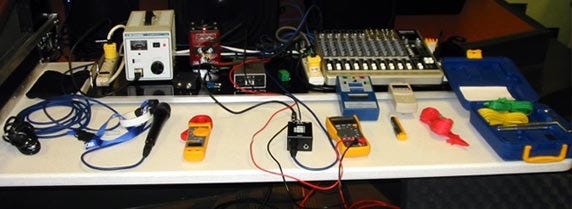Hello Mike
Sorry I can’t be over at your FMCA Rally. However this is good timing for an issue I just had! I have the 50A SouthWire EMS SurgeGuard 34951.
I was at a campsite on my way to Mammoth Ca, and the 50A pedestal had an “Open Ground”. I tested the 30A and it was fine, no problems. On my way back from a week at Mammoth, stayed at the same campground, but a different site. Same issue! I asked another motorhome about his pedestal and he said he tested his and it was fine. So, I asked him to show me how he tested his. (I’m Mike Sokol trained of course!). He showed me a Progressive Industries tester that he plugged into the pedestal similar to this one.
His pedestal checked out fine, so I tried my SouthWire and it was indeed fine. Soooo, I asked him if he could see how mine tested with his Progressive tester. It was FINE?! No problems? However when I plugged my SouthWire in, still OPEN GROUND!
First, I’d trust my SouthWire first instead of his progressive tester. Secondly, asked him what he used and he has a progressive hardwired unit in his RV. Now he’s concerned his is not up to par with mine or the open ground issue. He took a pic and is now ordering a replacement!
So, my question still remains. The open ground is apparently not caught on all types of testers or surge guards?!….
Also, I did mention and educated the park employee at the front desk, but seems like they aren’t doing anything about it. Initially they said they’d had ground issues around the park…..Go Figure! Your comments Please?!!!
Thanks in advance! Enjoy FMCA! - Randy Coleman
Hey Randy,
Interesting problem. I have done a bit of testing on how the open-ground detection circuit works on the Big 3 EMS/Advanced Surge Protectors; Progressive Industries, Hughes Power WatchDog and SouthWire Surge Guard. But I’ve only held a Progressive Industries Outlet Tester once in my hand, and have never tested one on my bench.
Here’s what I know!
All of these advanced surge protectors (and even the cheap 3-light outlet testers) work by measuring the voltage between neutral and ground. Normally this should be less than 5 volts AC due to voltage drop on the neutral conductor from other loads on the feeder or branch circuit. But if it measures higher than the design threshold (around 50 Volts IIRC) then the EMS/Advanced Surge Protector opens up the relay and shuts off shore power going to the RV.
Why the different readings?
From my casual testing a few years ago, I remember that the various brand Surge Protectors had different trigger thresholds. So one brand might find and open ground at 40 volts, while another brand would think that everything was fine. But I don’t remember all the various trigger voltage levels for each brand, only that they were surprisingly different.
Guess I’ll have to test these Surge Protectors again…
Here’s a picture of my desktop ground voltage injector I built for my Live Sound electrical safety classes. It allows me to inject up to 130-Volts of Hot-Skin potential on anything with a plug, as well as create 30-Amps of Ground Loop hum current for sound system training.
I’m super busy for the next month, but I’ve already asked Progressive Industries for samples of their 30 and 50-Amp outlet tester, and I already have EMS/Advanced Surge Protectors from everybody else. Once I do a formal test I’ll report back here as to exactly how each brand works under various open and hot-ground conditions. So please stand by!
Let’s play safe out there… Mike









I think I am beginning to understand why the NEC was at one time considering requiring GFCI protection on 120V, 30-amp RV park pedestals (grounds can be hazardous). My RV does trip a GFCI instantly. Mike has explained why this occurs with some RV’s. I do think it occurs with mine, because when my inverter is operating, it grounds the neutral and ground legs together. And when plugging into a GFCI receptacle, it immediately trips, as the inverter is testing for safe power before switching to shore power and opening that internal neutral ground connection. I think the ground and neutral connection made by the inverter is causing the GFCI to trip. When using a cheater plug to eliminate the ground connection to the GFCI, it no longer trips and is happy measuring equal currents through the line to neutral legs as that neutral ground connection is just another path for current to flow though the ground connection. And theoretically, with GFCI protection, a ground connection should not be needed, well, unless maybe to drain away static electrical charges. With GFCI protection, are grounds just more trouble than they are worth? Especially when needing to use a different kind of cheater plug with a floating neutral inverter generator to satisfy an EMS ground and allow power to pass?
If outlet testers test between neural and ground that would be different than a standard meter test of an outlet that tests hot to neutral and then hot to ground looking for a very similar result. I would say it's time to break out the meter on that questionable outlet.